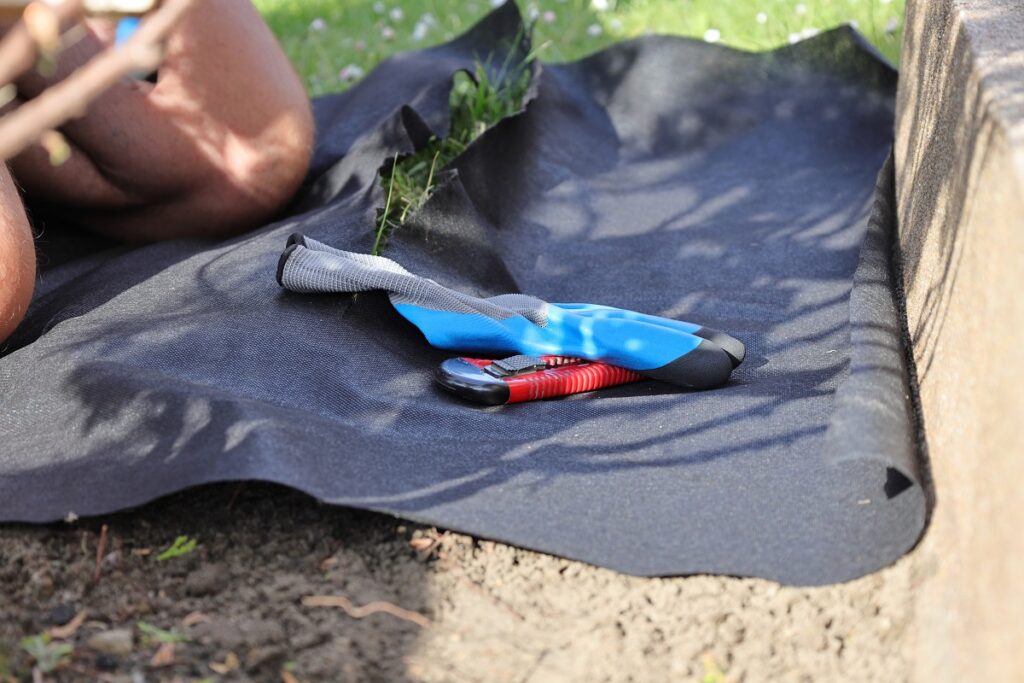
It is worth using agro-fleece in the garden for many reasons. First of all, it helps to control weeds, limiting their growth and making it easier to look after your plants. It allows you to avoid using chemical herbicides, which is good for the environment and the health of the plants. In addition agro-fibre improves soil structure, providing better air and water flow, which promotes faster plant growth.
By properly attaching the agro-textile to the soil, you can protect your crops from pests and adverse weather conditions. The nonwoven fabric also has an insulating function, which means that it protects the plants from frost in winter and from overheating in summer. Thanks to it, the plants have more stable conditions for growth, which translates into a more abundant harvest and a more beautiful garden. By ensuring that the fleece is properly fastened, you can be sure that it will effectively fulfil its protective function.
How do I fix the agro-textile to the ground? One of the most popular methods is the use of special pegs or pins, which are driven into the ground to hold the material firmly in place. This method is easy to apply and allows the agro-textile to be quickly and effectively fixed. These pegs are usually made of strong materials, which ensures a long service life. It also has the advantage of allowing additional pieces of agro-textile to be easily moved or fixed if necessary.
Alternatively, you can use heavy stones or bricks to hold the edges of the agro-textile. This method is just as effective, but may require more work and may not always have as lasting an effect as pegs. Heavy items may also need to be monitored more frequently to ensure they remain in place, especially after stronger winds.
How to fix the agro-textile in yet another way? You can backfill its edges with soil or gravel. This method is low cost and aesthetically pleasing, although it may not be as durable as using pegs. When choosing the right fixing method, it is worth considering the specifics of your garden and the weather conditions to ensure maximum protection for your plants.
Once you know how to use agro-textile, let’s move on to its application. Agro-textile is a versatile material used in horticulture to protect plants from adverse weather conditions and pests. The correct use of this material can make a significant difference to the health and productivity of plants. Agro-woven fabric, available in different weights, allows you to tailor the protection according to the needs of the specific plant and the climatic conditions.
To begin with, it is worth assessing what function the agro-textile is intended to serve — whether it is to protect the plants from frost, excessive sunlight, wind or pests. For protection against cold and frost, a higher weight agro-textile is used, which provides better thermal insulation. Lighter variants, on the other hand, are ideal for summer, protecting plants from excessive sunlight while allowing air and water to flow freely.
The beds should be thoroughly prepared before using the agro-textile. It is advisable to remove weeds and other undesirable plants that could compete with the crops for nutrients. Once the ground has been prepared, the agro-textile should be spread evenly over the bed, taking care that the material does not adhere directly to the plants. This can be achieved by using special bows or other supports to keep the agro-textile at the right height.
During the growing season, it is a good idea to regularly check the condition of the agro-textile and the plants underneath it. This will allow you to spot any problems early on, such as plant diseases or pest attacks that may require intervention.
When fixing an agro-textile, basic mistakes are often made that can affect its effectiveness and durability. One of the most common mistakes is the improper preparation of the ground. The soil should be cleared of stones, roots and other obstacles that can damage the agro-textile. It is also a good idea to level the surface thoroughly, which will make it easier to fix the material stably. Another mistake is to fix the edges too weakly. Whichever method you choose, be it pegs, stones or backfilling with earth, make sure that the edges of the agro-textile are securely fastened to avoid it being displaced by wind or rain.
In addition, inappropriate placement of fixing points is also a common problem. These points should be spaced approximately every 30–50 cm to ensure adequate stability. Failure to do this can lead to the agro-textile moving and exposing parts of the ground. It is also important to use professional, sturdy pegs or pins that hold the material firmly.
If you are wondering what to fix the agro-textile with, additional tips and tricks can make the whole process significantly easier and ensure the durability of the material. Here are some practical tips that can help when fixing agro-textile to the ground: